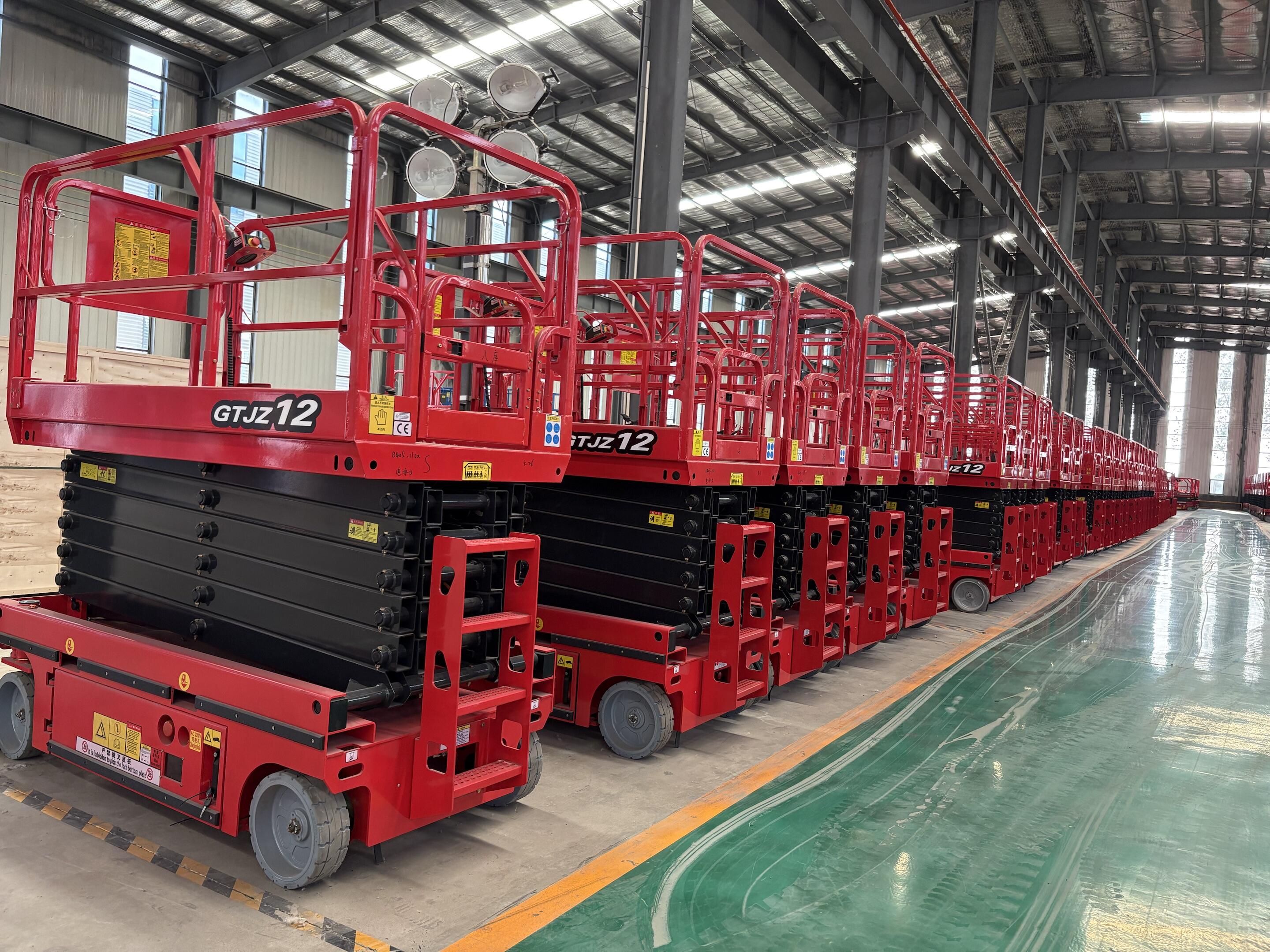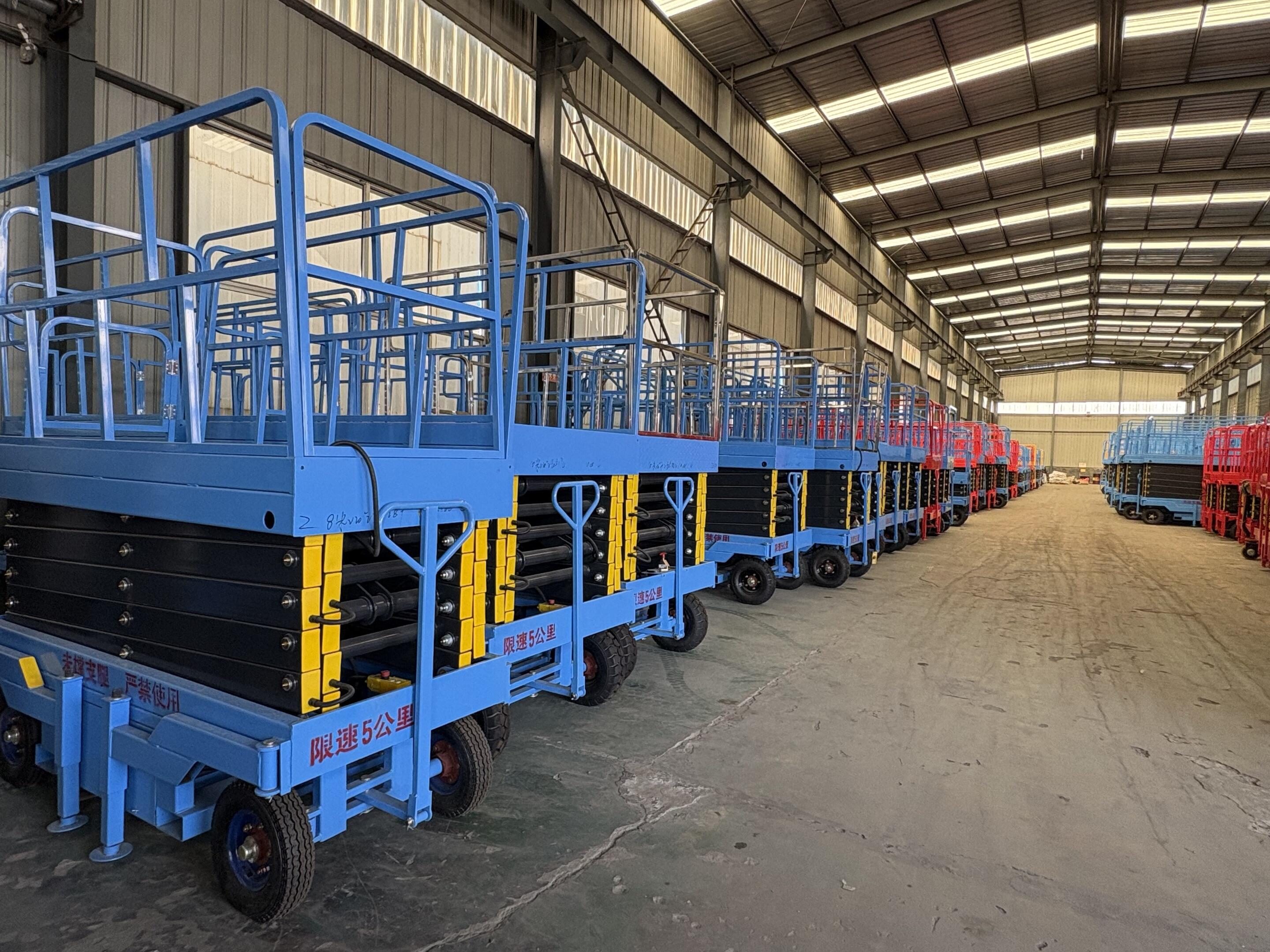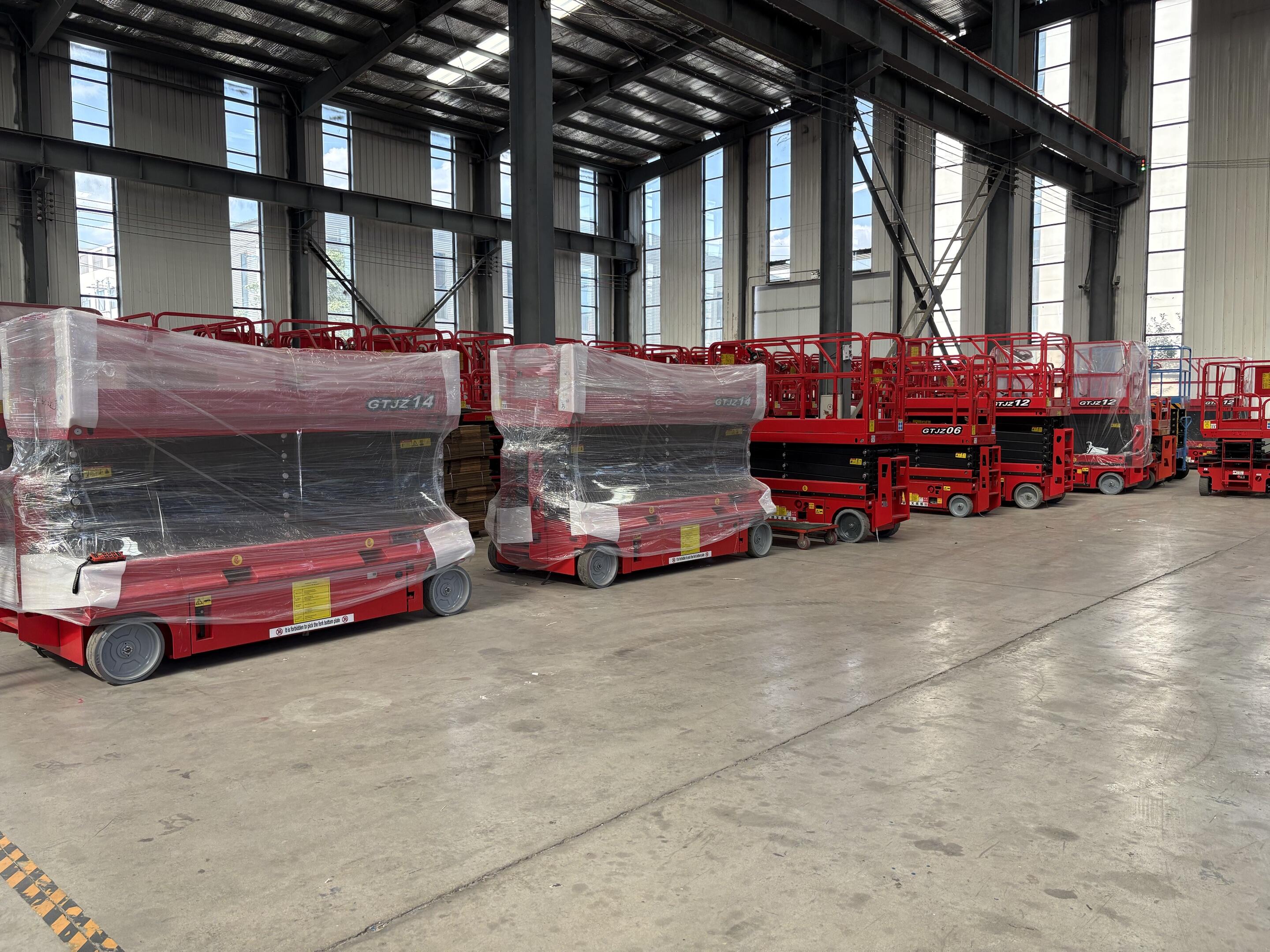A scissor lift platform is a robust and efficient material handling and access device that utilizes a scissor-like mechanism to raise and lower a flat, stable platform, providing safe and controlled elevation for both personnel and goods. This equipment is a staple in industries such as construction, manufacturing, warehousing, retail, and facility management, where tasks at height or vertical movement of materials are common. Unlike ladders or scaffolding, which can be unstable or time-consuming to set up, a scissor lift platform offers quick deployment, a large working area, and enhanced safety features, making it a preferred choice for many applications. The structure of a scissor lift platform is defined by its two main components: the platform and the scissor mechanism. The platform is a rigid, flat surface typically constructed from high-grade steel or aluminum, designed to support heavy loads while remaining lightweight enough to be elevated efficiently. Its size varies depending on the model, with small platforms measuring around 1.5 meters in length and 0.8 meters in width, suitable for single operators with tools, and larger platforms exceeding 3 meters in length, capable of accommodating multiple workers, large equipment, or palletized goods. The platform is enclosed by guardrails, usually at least 1 meter in height, which prevent falls and keep materials securely within the platform’s boundaries. Some models feature swing-out or removable guardrails to facilitate easy loading and unloading of materials or to allow access to tight spaces. The scissor mechanism, located beneath the platform, consists of a series of interconnected metal bars (or “scissors”) that pivot at their joints, extending to raise the platform and collapsing to lower it. This mechanism is powered by either hydraulic, electric, or mechanical systems, each influencing the lift’s performance and suitability for different environments. Hydraulic systems are the most common, using a hydraulic cylinder to drive the scissor movement, offering smooth operation and high lifting capacity, making them ideal for heavy-duty applications. Electric systems, often battery-powered, are quieter and produce no emissions, making them perfect for indoor use in places like warehouses, shopping centers, or hospitals where noise and air quality are concerns. Mechanical systems, which may use screws or chains, are less common but offer precise control for light-duty tasks. The base of the scissor lift platform provides stability, with a wide footprint that distributes the weight evenly, reducing the risk of tipping. Many models are mounted on wheels or casters, allowing for easy maneuverability across the worksite. Indoor models often have non-marking rubber tires to protect floors, while outdoor models feature pneumatic tires that can handle rough terrain such as gravel, grass, or uneven concrete. Some heavy-duty models are equipped with outriggers—extendable legs that can be deployed to further stabilize the lift, especially when working on sloped ground or with maximum load capacity. Safety is a core design principle of scissor lift platforms, with multiple features integrated to protect operators and prevent accidents. Emergency stop buttons are strategically placed on both the platform and the base, allowing for immediate shutdown in case of an emergency. Overload sensors monitor the weight on the platform and prevent the lift from operating if the load exceeds its rated capacity, preventing structural damage or collapse. Tilt sensors detect if the lift is on an incline beyond safe limits and sound an alarm, halting operation until the issue is resolved. Many models also include a secondary braking system that engages automatically if the primary system fails, ensuring the platform remains securely in place. Additionally, the guardrails are reinforced to withstand impacts, and some platforms have toe boards along the edge to prevent tools or small materials from falling off. The versatility of scissor lift platforms is one of their key advantages, as they can be used for a wide range of tasks. In construction, they are used to carry workers and tools to elevated areas for tasks like installing windows, painting, or repairing roofs. In warehousing, they enable workers to access high storage racks, retrieving or storing pallets of goods efficiently. In manufacturing facilities, they assist in moving materials between different levels of production lines or accessing machinery for maintenance. They are also used in event management to set up lighting, sound equipment, or decorations, and in retail to stock high shelves or perform maintenance on ceiling fixtures. The ability to lift both people and materials eliminates the need for separate equipment, streamlining operations and reducing costs. When selecting a scissor lift platform, several factors should be considered to ensure it meets specific needs. Lifting height is a primary consideration, with models ranging from 2 meters for low-level tasks to over 12 meters for high-reach applications. Load capacity is another critical factor, with capacities ranging from 200 kg for lightweight models to over 2,000 kg for heavy-duty versions. The platform size should be chosen based on the number of workers and the amount of equipment or materials that need to be carried. Power source is also important: hydraulic models are best for heavy loads and outdoor use, electric models for indoor, emission-free environments, and battery-powered models for portability without access to electricity. Maintenance of a scissor lift platform is essential to ensure its longevity and safe operation. Regular inspections should include checking the scissor mechanism for signs of wear, such as bent or cracked bars, loose bolts, or excessive rust. Hydraulic systems require checking fluid levels and looking for leaks, as low fluid or leaks can impair performance. Electric systems need battery checks to ensure they hold a charge and wiring inspections to prevent shorts. The platform’s guardrails and non-slip surface should be inspected for damage, and all safety features, including emergency stops and sensors, should be tested regularly. Lubricating the pivot points of the scissor mechanism helps maintain smooth operation and prevents premature wear. By adhering to a maintenance schedule, businesses can minimize downtime and ensure the lift remains safe for use. Cost-effectiveness is a significant benefit of using a scissor lift platform. While the initial investment may be higher than that of ladders or scaffolding, the time saved in setup and operation, combined with the reduced risk of accidents, makes it a cost-effective choice in the long run. The versatility of the equipment means it can be used across multiple tasks and industries, eliminating the need to purchase and maintain multiple types of access equipment. Additionally, the enhanced safety features reduce the likelihood of workplace injuries, which can result in costly medical expenses, insurance claims, and lost productivity. For businesses that use the lift regularly, the return on investment is typically realized within a short period. In summary, a scissor lift platform is an indispensable tool for any industry that requires safe, efficient access to elevated areas or vertical movement of materials. Its robust design, versatile functionality, and advanced safety features make it a reliable and cost-effective solution for a wide range of applications. Whether used indoors or outdoors, for light or heavy-duty tasks, a scissor lift platform enhances productivity, ensures worker safety, and simplifies operations, making it a valuable asset for businesses of all sizes.


